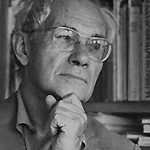Graphic Rug color wheel
Design Max Bill [1970]
- [Price]
- Acrylic
1000 JPY32,000
1600 JPY59,000
1800 JPY68,000
2000 JPY82,000
Wool
1600 JPY95,000
1800 JPY115,000
2000 JPY145,000 - [Size]
- 1000 Diam. 1000 mm
1600 Diam. 1600 mm
1800 Diam. 1800 mm
2000 Diam. 2000 mm
Length of pile: 15 mm - [Material]
- Acrylic 100% / Wool 100%
- [Brand]
- METROCS(made in Japan)
- [Remarks]
- It can be used on floor heating or electric carpet.
* surface - heat resistant
1000 size is only available in Acrylic.
This rug is like an art piece in living space. The max, biena + jakob bill foundation supervised the commercial production of the rug designed by Max Bill, based on graphic art [color wheel. (1970)] born from his mathematical concept. The iconic rug with bright colors will be a great accent in your space.
Each piece is hand-crafted in Japan and the material can be chosen from acrylic 100% or wool 100%. Both materials have soft texture providing a year-round pleasant feel.
[ Acrylic Rug ]
It has fluffy and warm texture but is strong for friction. As it has less absorbency, it is resistant to water-soluble stain, mold and pest. The vivid colors are also one of good characteristic of acrylic, and it is reasonable compared to wool.
[ Wool Rug ]
It has soft and dense texture. The wool itself is a strong material and it adjusts moisture inside the fibers that keeps comfortable feeling on the surface. As wool’s nature, it is resistant to stains and color loss, and its beautiful color and luster last long.

-
Max Bill [ 1908 - 1994 ]
Born in Winterthur, Switzerland in 1908. For three years beginning in 1924, Bill studied silversmith in Zurich, after which he later studied under Wassily Kandinsky and Paul Klee at Bauhaus. From 1929 onward, Bill wore many hats, including that of painter, sculptor, graphic artist, architect, and later industrial designer. However, during this period he mainly was active as a painter. Later, determined to pass on the spirit of Bauhaus, he devoted himself to the founding the Ulm School of Design, where he would serve as the school’s first Chancellor.
Consistently pursuing the creative process founded in “regularity” and “logic,” today his theories have a profound influence on the worlds of design and art.









